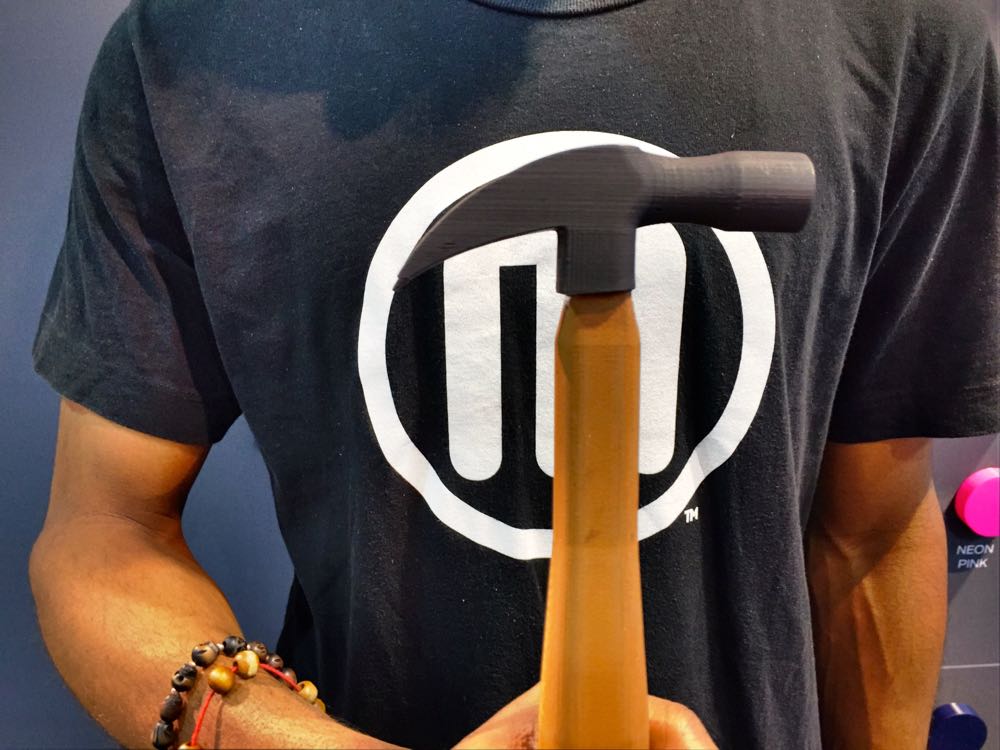MakerBot did not announce any new machines this week, but they did announce some rather unusual filaments.
Previously the company’s complement of official plastic filaments varied only by color and weight. Now, that’s changed. They announced the availability of what they’re calling “PLA Composite Filaments”.
They’re standard PLA filament, but infused with other substances to form a composite 3D printing material. The prints then take on the properties of the added substances. MakerBot announced the availability in “late 2015” of four composite filaments:
- Limestone: produces a “stony” print for rock-like applications
- Maple: includes wood fibers and produces sandable, drillable wood-like prints
- Bronze: a polishable material can result in shiny objects
- Iron: prints can be magnetized or presumably develop a rusted surface
These materials will permit printing of new object types with vastly larger practical uses. One early example produced by MakerBot is a standard hammer, shown above by MakerBot’s Tristan Hinds. The hammer’s head is printed in Iron, while the handle is Maple. The heft and feel of the hammer are correct, although a bit light as this particular print did not use solid infill. Nevertheless, it could definitely be used for light duty hammering.
This approach is not new to the industry as similar techniques have been used by third party filament manufacturers for a while now. However, these filaments are officially supported by MakerBot and will be chemically tuned to work with MakerBot’s software and hardware for great prints.
These third party experiments have revealed a few interesting twists to using composite filaments:
Filament Usage: Typically filament usage is calculated and sold by weight. However, composite filaments, particularly metal-infused filaments, change the equation. The same weight of filament will not print the same size object. Thus, expect MakerBot to switch their calculations to volume instead of weight.
Wear and Tear: Some composite filaments include particles that can damage 3D printer hot ends, particularly metal composite filaments. These filaments contain tiny metal particles that gradually abrade the hot end’s interior, eventually leading to less accurate printing.
The bottom line on this is simply that the hot end becomes a consumable item, and this is why MakerBot made their new Smart Extruder easily swappable. When printing with special filaments, pop in a special extruder. When it wears out, put in a new one.
We suspect these filaments are only the beginning of what could become a very wide variety of specialty filaments in the future.
Via MakerBot


